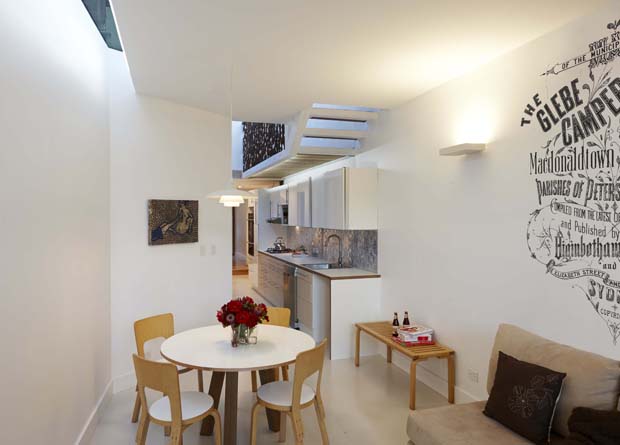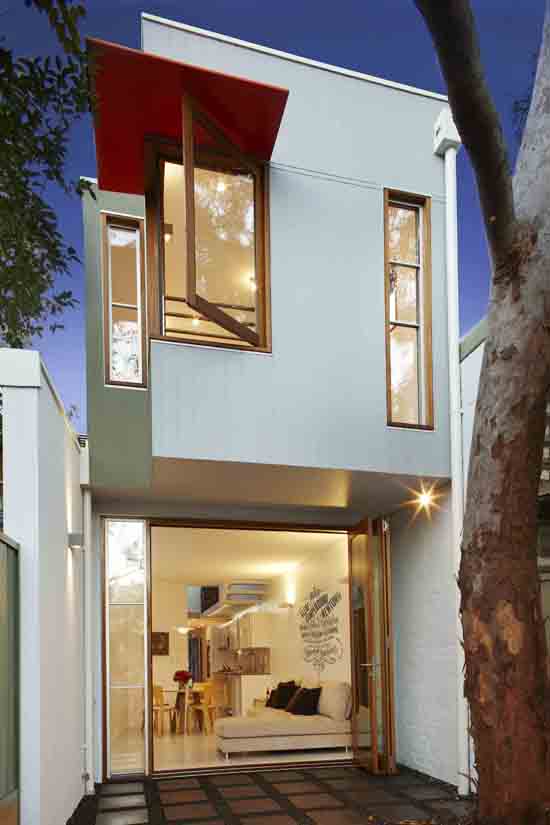The Bridge House achieves a unique series of sustainably designed, highly efficient spaces that maximise the potential of a challenging site. The addition to the house rectified the poorly planned and dimly lit terrace to create efficient and light-filled areas suitable for modern living.
Extending the rear to create an open plan living, kitchen and dining room with a strong connection to the yard, the architects also increased the size of the two first floor bedrooms, and incorporated a new centrally located bathroom.
A part of the brief also asked that sustainable strategies be incorporated into the design, so that heating and cooling costs are reduced, while materials used during the renovations will have low environmental impacts and energy systems.
Solar access, which was a key factor in achieving a sustainable solution, was at first difficult to achieve because of the narrow, south-facing orientation of site, which has minimal exposure to the north. This was exacerbated by the poor condition of the existing structure, which had extensive termite damage that restricted the reuse of the original dwelling’s existing parts.
Despite these constraints, sustainable features were prioritised and largely retained. The only ESD initiative that was compromised was the hydronic floor heating, which the architects and clients agreeing to install all required pipes within the floor, and connecting the gas heating system at a later date when the budget permitted.

After the alterations and additions, the house now consists of a series of adaptable, open plan rooms with passive solar design, natural ventilation and insulated thermal mass floor.
At the same time, all windows are of high thermal performance, and either double glazed with timber frames, or thermally broken aluminium frames.
Within the constrains of a very small footprint, the Bridge House has succeeded in surpassing all mandatory BASIX requirements, embodying architectural qualities as well as sustainable design to create an exemplar contemporary contribution to the built environment.

INITIATIVES
-
Building was designed to be durable and high-quality, so that its usable lifespan extends well beyond that of typical construction methods. This was achieved through careful detailing and material selection, as well as designing to ensure that high wear areas and components are serviceable
-
Thermally modelled using second generation software, the living spaces and bedrooms achieved 5.5 to 9 star ratings, a marked improvement on the 2 star rating of the original building
-
Reuse of existing bricks within new walls. Recycled and sustainably sourced local timbers also utilised
-
3 Star ‘Green’ concrete used with recycled and waste components
-
Where materials with high embodied energy have been employed, they are detailed and protected to ensure maximum service life
-
Externally insulated thermal mass floor
-
Operable skylights to maximise natural ventilation
-
Central light well to maximise natural light, with LED light fittings throughout
-
Zoning areas to achieve maximum energy efficiency
-
High efficiency ratings across all plumbing fixtures and fittings
-
Landscaped areas are permeable to minimise surface water runoff
Images: Nick Bowers

